#baturite porcupine
Photo
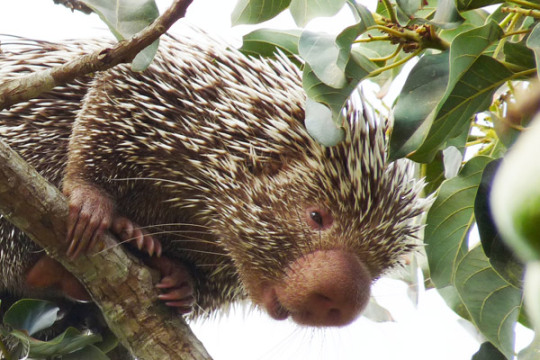



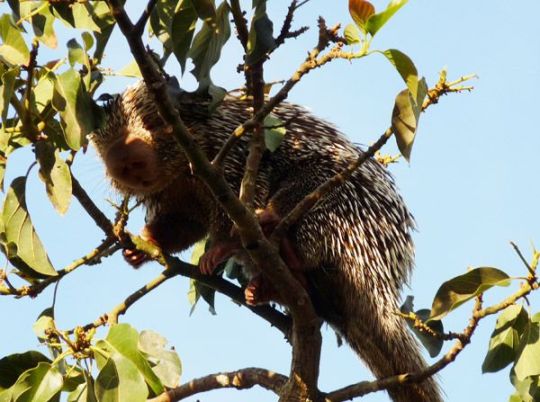



In Brazil’s Baturite Mountains, scientists have uncovered a new species of prehensile-tailed porcupine, according to a new paper in Revista Nordestina de Biologia. Dubbed, the Baturite porcupine (Coendou baturitensis), the new species was discovered in 2013 when scientists noticed significant differences between it and its closest relative, the Brazilian porcupine (Coendou prehensilis). The Baturite porcupine inhabits montane forests in northeastern Brazil, and is so far only known from the Brazilian state of Ceará.
The Baturite porcupine “was discovered after a careful review of the medium and large mammals from northeastern Brazil. First of all, we noted a very different shape of the skull of a porcupine collected at the Baturite Range. Then, we examined several specimens from different localities of porcupine, especially of the Coendou prehensilis, the closest species. […] Besides the skull difference, We found some characteristics of the skin unique to these animals and had not been found in any other so far,” the lead author, Anderson Feijó, told mongabay.com. The new species is darker with differently colored quills than its near-relative.
The Coendou porcupines, also known as prehensile-tailed porcupines or coendous, are nocturnal, herbivorous, solitary rodents native to Central and South America. The most prominent feature of these animals is their long, unspined tail. They use it as a fifth hand that helps them hold on to branches as they climb through the forest canopy. Prehensile-tailed porcupines spend the day sleeping in a hollow tree or curled up in the fork of a branch; at night they move around. Although these porcupines tend to move slowly, they are surprisingly agile and can climb quickly when necessary. They cannot jump and must descend to the ground if they need to cross a gap between trees.
[x]
#porcupine#new world porcupine#baturite porcupine#coendou baturitensis#prehensile-tailed porcupine#rodents#quill pig
196 notes
·
View notes
Text
Brazil: Baturite Porcupine Discovered
The link below is to an article reporting on the discovery of the Baturite Porcupine in Brazil.
For more visit:
http://news.mongabay.com/2013/1209-hance-baturite-porcupine.html
View Post
0 notes
Photo
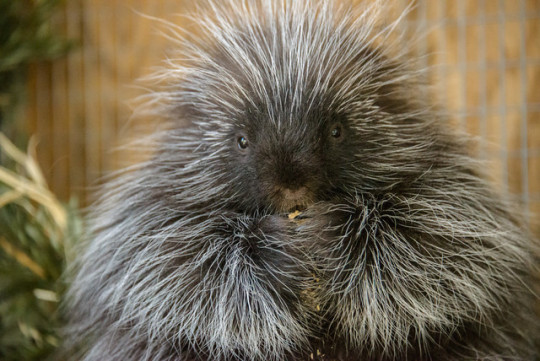
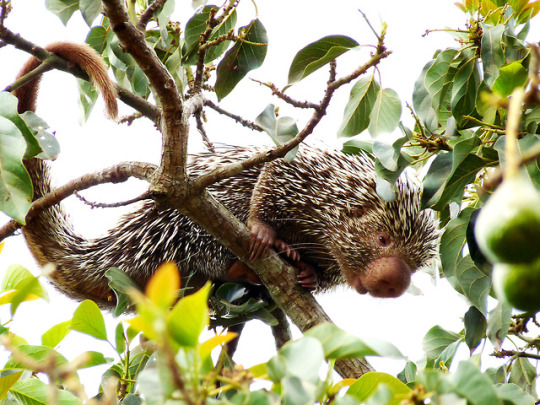



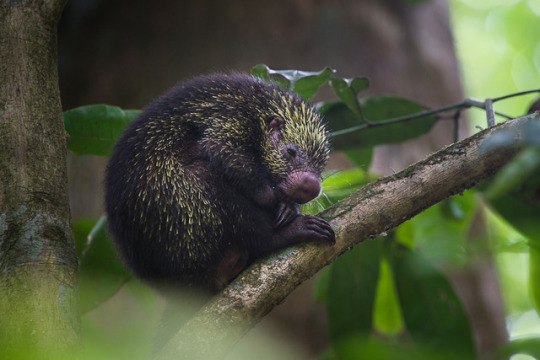

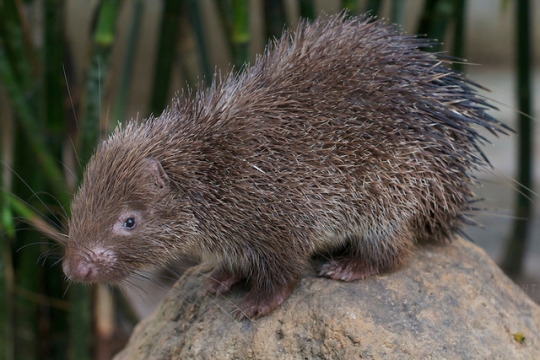


Porcupines are rodents with a coat of sharp spines, or quills, that protect against predators. The term covers two families of animals, the Old World porcupines of family Hystricidae, and the New World porcupines of family Erethizontidae. Both families belong to the infraorder Hystricognathi and display superficially similar coats of quills: despite this, the two groups are distinct from each other and are not closely related to each other. The name "porcupine" comes from Latin porcus pig + spina spine, quill, via Old Italian—Middle French—Middle English. A regional American name for the animal is quill pig.
1. North American Porcupine
2. Baturite Porcupine
3. African Brush-tailed Porcupine
4. Cape Porcupine
5. Prehensile Tailed Porcupine
6. Mexican Hairy Dwarf Porcupine
7. Malayan Porcupine
8. Phlippine Porcupine
9. Stump-tailed Porcupine
10. Bristle-spined Porcupine
Porcupines' quills, or spines, take on various forms, depending on the species, but all are modified hairs coated with thick plates of keratin and embedded in the skin musculature. Quills are released by contact or may drop out when the porcupine shakes its body. New quills grow to replace lost ones. Porcupines were long believed to have the ability to project their quills to a considerable distance at an enemy, but this has since been proven to be untrue.
Porcupines vary in size considerably: Rothschild's porcupine of South America weighs less than 2.2 lbs; the crested porcupine found in Italy, Sicily, North Africa, and sub-Saharan Africa can grow to well over 60 lbs.
The Old World porcupines live in southern Europe, Asia, and most of Africa. They are large, terrestrial, and strictly nocturnal. The New World porcupines are indigenous to North America and northern South America. They live in wooded areas and can climb trees, where some species spend their entire lives. They are less strictly nocturnal than their Old World relatives, and generally smaller.
The 11 Old World porcupines tend to be fairly large, and have spikes grouped in clusters. The two subfamilies of New World porcupines are mostly smaller (although the North American porcupine reaches about 33in in length and 40lb), have their quills attached singly rather than grouped in clusters, and are excellent climbers, spending much of their time in trees. The New World porcupines evolved their spines independently (through convergent evolution) and are more closely related to several other families of rodents than they are to the Old World porcupines.
Defensive behaviour displays in a porcupine depend on sight, scent and sound. Often, displays are shown when a porcupine becomes agitated or annoyed. There are four main displays seen in a porcupine which are quill erection, teeth clattering, emitting of odour, and attack. These displays are ranked from least aggressive to most aggressive respectively.
A porcupine's colouring aids in part of its defense as most of the predators are nocturnal and colour blind. A porcupine's markings are black and white. The dark body and coarse hair of the porcupine are a dark brown/black and when quills are raised, present a white strip down its back mimicking the look of a skunk. This, along with the raising of the sharp quills, deters predators.
Along with the raising of the quills, porcupines clatter their teeth causing warning noise to let predators know not to come closer. The incisors vibrate against each other, the strike zone shifts back and the cheek teeth clatter. This behaviour is often paired with body shivering which is used to further display the dangerous quills. The rattling of quills is aided by the hollow quills at the back end of the porcupine.
The use of odor is when the sight and sound have failed. An invasive scent is produced from the skin above the tail in times of stress, and is often seen with quill erection. If the above processes fail, the porcupine will attack by running sideways or backwards into predators. A porcupines tail is also able to swing in the direction of the predator. If contact is made, the quills could be impaled into the predator causing injury or death.
Porcupines are only occasionally eaten in Western culture, but are very popular in Southeast Asia, particularly Vietnam, where the prominent use of them as a food source has contributed to significant declines in their populations. More commonly, their quills and guardhairs are used for traditional decorative clothing. The main quills may be dyed, and then applied in combination with thread to embellish leather accessories such as knife sheaths and leather bags. Lakota women would harvest the quills for quillwork by throwing a blanket over a porcupine and retrieving the quills it left stuck in the blanket.
#porcupine#quill pig#new world porcupine#old world porcupine#north american porcupine#baturite porcupine#african brush-tailed porcupine#cape porcupine#prehensile tailed porcupine#mexican hairy dwarf porcupine#malayan porcupine#philippine porcupine#stump-tailed porcupine#bristle-spined porcupine#rodents#hystricidae#erethizontidae
84 notes
·
View notes